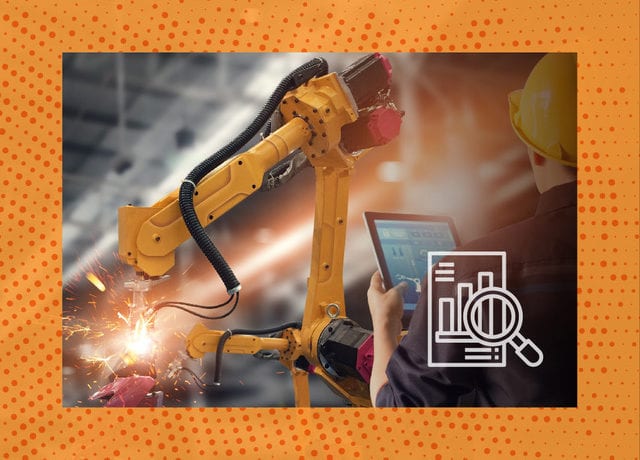Last year was a wake-up call for the manufacturing industry in the U.S.
“COVID-19 has really gotten people’s attention,” said Harry Moser, President of the Reshoring Initiative. “COVID-19 has revealed the U.S. dependency on offshore manufacturing… As the pandemic shows, we can suddenly be in the impossible position of not having enough critical supplies.”
And it’s not just repatriation at the top of manufacturers’ minds. Manufacturers are re-examining safety, how to upskill employees, digital transformation, and their direct relationships with consumers.
There’s a lot of change happening in this industry. As we enter into a new stage of the pandemic, what are the priorities and expectations for 2021?
We encourage you to subscribe to our blog for the latest data surrounding the advertising industry. We will provide daily updates as COVID-19 continues to make its mark on the US economy.

Trends Shaping the Manufacturing “Reset” in 2021
Gartner has outlined a framework for decision-leaders as they build resilience in a post-pandemic world. This “Reset” framework is divided into three phases: respond, recover, and renew. As manufacturing companies progress from “recover” to “renew,” they’re on an uphill climb—but are already making clear progress.
Manufacturing output and jobs remain below pre-pandemic levels, but at the same time, have been gaining traction for eight months in a row. The Union Pacific railroad even shipped 3% more volume in the final three months of the year, compared to 2019, signalling that recovery is steady.
Additionally, analysts predict that affluent Americans who’ve been saving money during the pandemic could unlock a spending surge later in the year. Much of this spending might go to travel and entertainment, but manufacturers feel hopeful that they’ll reap the benefits.
After the presidential election, Deloitte surveyed manufacturing executives—63% of respondents said they had a somewhat or very positive outlook on business. And late last year, global trade hit pre-pandemic levels for the first time.
As the economy rebounds, manufacturers plan to invest in digital tools to help optimize production and readapt their workforce and workplace. Investing in digital tools and modernizing the workforce means upskilling the workforce and adding skilled jobs.
“Manufacturers will follow the lead of companies like Stanley Black & Decker, which is committed to empowering millions of factory workers by 2030 through retraining, access to STEAM education, vocation/trade skills and Makerspaces,” explains Amar Hanspal, CEO of Bright Machines. “This will be a big priority for the industry, especially as policymakers focus on economic recovery and job creation with a new administration at the helm.”
In 2021, Hanspal expects manufacturers to invest more in:
- Localized production
- Digital transformation of the factory floor
- Increased investment in the workforce
- Sustainability as a selling point, rather than an afterthought
As manufacturers pour their energy into rapid transformation, will they increase their advertising efforts?
MediaRadar Insights
In 2020, the manufacturing industry reduced its overall ad spend (just as most B2B industries did). However, the cuts weren’t as significant as other industries, especially across print.
Last year, there were 1759 manufacturing brands that invested $31.3mm in print and digital media. This was down 4% and 18% respectively compared to 2019—in which there were 1830 brands spending $38mm across the same formats.
January data is still coming in, but in the first few weeks of January 2021, companies invested $1.6mm in advertising. This is a 48% decrease compared to January 2020 (which was pre-COVID), however this number will increase once all of January’s data is compiled.
Manufacturing seems like it’s still off to a slow start with advertising—however, it has remained fairly consistent with its print spend, especially compared to other industries.
The manufacturing industry only decreased print spending by 4% last year, while other B2B industries slashed their print spend dramatically. It won’t take much for manufacturers to bump their spending back to normal in this format.
In fact, during January 2021, 91% of manufacturing ad spend went to print, compared to January 2020, when it made up only 87% of the total month’s spend.
As companies see business activity increase, we’ll likely see ad spend recover. And even though many other B2B industries made a shift to digital, it seems that manufacturing is staying steady with print for the time being.
For more details on which publications manufacturers are investing in and which brands are spending the most, reach out to us directly.
For more updates like this, stay tuned. Subscribe to our blog for more updates on coronavirus and its mark on the economy.



